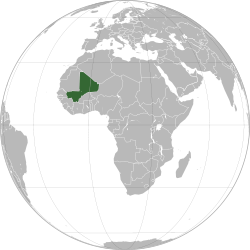European Commission Increases Relief Aid In Mali
The European Commission will be increasing its humanitarian response to the crisis in Mali by €20 million.
Once approved by European Union’s budgetary authorities, the additional funding will bring the EU’s humanitarian support to Mali to €101 million in 2012.
With the new funding the Commission aims to boost the relief effort in all parts of Mali, particularly in the North, as well as in neighbouring countries to which Malian refugees have fled as a result of the conflict.

European assistance is being spent on bringing food, water and sanitation, shelter, health and protection to the most vulnerable Malians, especially children, women and the elderly.
“While all eyes have been on the conflict in the north of Mali it is essential that we bring the focus back on the humanitarian crisis faced by its people,” said Kristalina Georgieva, the European Commissioner for International Cooperation, Humanitarian Aid and Crisis Response.
“Millions of Malians are in dire need of urgent aid and relieving their suffering must be our number one priority. Thanks to early and coordinated action we managed this year to avert a catastrophe threatening the lives of 18 million people across the Sahel. But even as we work harder to ensure that such a crisis can never happen again, by building resilience to natural disasters like droughts, we pledge that this work will not come at the expense of emergency response whenever and wherever it is needed. It is for this reason that at this time we are mobilising an additional €20 million for Mali.”
She urged all parties to the crisis to respect the impartiality and neutrality of humanitarian agencies currently working in spite of the insecurity they face to bring respite to the victims. In October, a local aid worker was killed in Niger and five of his colleagues were kidnapped by militants close to the Malian border. “Without safe and secure access for humanitarian workers our aid cannot save those whose lives are now hanging in the balance,” added Commissioner Georgieva.
Background
Mali has the second highest infant mortality rate in the world, after Somalia, with malnutrition one of the major factors. More than half a million Malian children have suffered from acute malnutrition during this year so far. While there is cautious hope for a reasonably good harvest in the coming weeks the prices of staple foods are likely to remain so high that the poorest Malians will remain locked out of the market and in need of food assistance for many months to come.
The conflict in Mali has forced 400,000 people to flee their homes while 4.6 million Malians are affected by the ongoing food crisis. Those Malians in need of humanitarian assistance include 200,000 forced from their homes inside northern Mali and another 200,000 who are now refugees in neighbouring countries. The communities who are hosting those displaced by the conflict have already been made vulnerable by the food crisis and also need help.
The European Commission is the leading donor in the Sahel food crisis and was also the first off the mark in its early stages, providing €10 million in November 2011. Successfully translating early warning into early action has already saved thousands of lives among the 18 million people, across 8 countries of the Sahel region, affected by the crisis. The Commission’s aid has so far reached a million children under two years of age and 500,000 pregnant and breast-feeding mothers.
To address the chronic food security problem in the Sahel, in addition to the €337 million allocated to the current food crisis and conflict in Mali, another €208 million is in place to fund on-going projects. This brings the Commission’s total commitment to better food security in the Sahel to over €500 million.
In June a partnership was launched in Brussels to strengthen the resilience of the Sahel to future crises. The initiative, called AGIR Sahel (Alliance Globale pour l’Initiative Resilience), has one core aim: to make sure that the people in the Sahel can better cope with future droughts.
